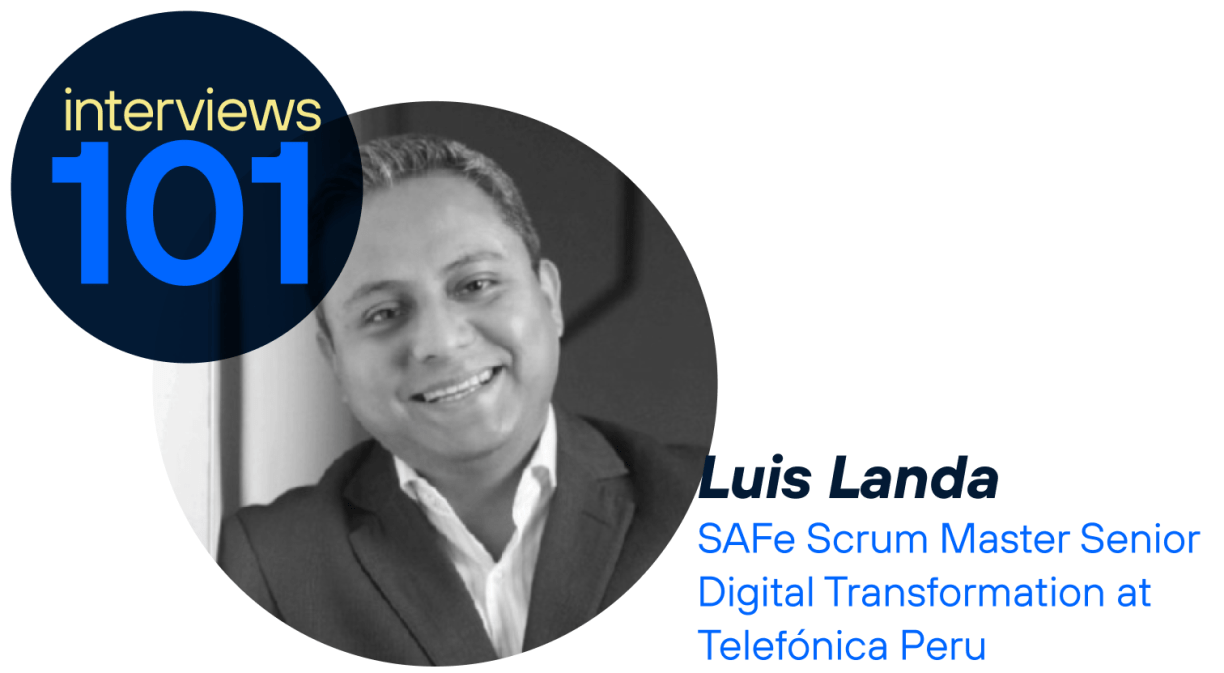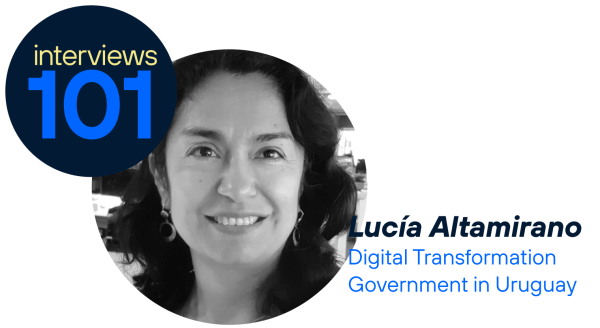What does your work at Telefónica consist of?
When I was 11 years old with the idea of creating posters, brands and polo shirts, I was enrolled in a Design course, there was a change of classrooms at the last minute and I ended up in a programming class with Visual Basic Studio 6.
I remember that I had to make accounting forms, I was very comfortable creating them and when we saved the information in a database I felt how my mind was filled with ideas and I knew from that moment on that software engineering was my destiny.
My background is in computer and systems engineering, I started as a programmer, continued as a tester, analyst, development manager, project manager and in the last few years as an agile specialist. This allowed me to meet many people, teams, applications, experiences and successes.
Today I am an agent of change in BI and Big Data management, I believe that to be a company adaptable to changes in the sector it is necessary to have more motivated people, improve time to market, reduce defects and achieve efficiency.
Although it may be a somewhat broad term, what does digital transformation consist of?
Digital transformation aims to increase customer satisfaction, operational efficiency and competitiveness by using technology and methods in the design, development and delivery of products and services.
What are the benefits?
- Improved customer experience: by having constant feedback from the customer you can validate the perception of their preferences and thus improve the product offering.
- Increased efficiency: the focus on what generates value frees up capacity to invest in new initiatives.
- Increased competitiveness: adaptability to change gives you a better position to compete in the market.
More concretely, what does the job of a scrum master consist of?
The scrum master is a change agent who ensures and evolves the environment where the team can be highly productive and creative.
With the team:
- Ensure the use of agile principles and practices.
- Ensure delivery flow by identifying bottlenecks, unblocking impediments, eliminating disruptions).
- Coach the team to improve their performance and self-organisation.
With the organisation:
- Promote agile practices in the organisation.
- Ensure that objectives are met.
- Scaling up, help the organisation to understand and adopt agility.
What professional profile should a person in this profession have?
In recent years the role has evolved, it goes beyond knowing agile frameworks and soft skills, it now requires technical, business and continuous learning skills to understand and discover emerging practices,
Key skills:
- Deep mastery in agile frameworks: values, principles, practices, roles and events of scrum, Kanban, Lean, XP frameworks among others.
- Agile mindset: agility must be part of your day to day.
- Ability to inspire and motivate teams.
- Effective communication: convey complex ideas in a simple and timely manner.
- Coaching, mentoring and teaching: to guide, propose and train the team.
- Experience in product development: life cycle and main challenges.
- Project management tools: to learn how to use Jira, Trello, Azure, DevOps, Jenkis, among others.
- Continuous learning: to seek out and learn new practices and tools.
- Other skills such as: continuous improvement, adaptation to change, conflict resolution, adaptability, empathy, reframing, critical thinking, creativity, innovation, results orientation, data analytics and artificial intelligence among others.
What are your main responsibilities?
Using the analogy of a football team, the scrum master ‘s responsibilities are the result of combining the coach, captain and physical trainer.
In a way like a coach, as he is in charge of guiding the team, solving problems that arise during the match, however, the coach has a more hierarchical weight and a scrum master seeks self-organisation.
As the capital of the team, because he facilitates communication during the match, motivates the players and ensures decision making at crucial moments.
Physical trainer as he is in charge of keeping the players in top physical and mental condition.
How does a scrum master ensure that teams meet their objectives?
In my experience, the process I use is based on “improvement kata ’, that is:
- Prepare the ground: create the sense of need to set the objective.
- Have clear objectives: have an objective to connect the activities and prioritise in case of conflicts, to create, improve and use the objectives.
- Know yourself: identify the stage of maturity, culture, context, team characteristics, metrics and main alerts.
- Set a medium or short-term challenge: establish a future condition that can be developed in a period of time that we call a sprint (2 to 4 weeks).
- Analytical and continuous improvement: evaluate the result obtained, the communication, the process and the tools used during the 2 to 4 weeks.
What tools exist to improve project management?
It depends on what you are looking for within the project management and the type of use (tool for exclusive use of the team or tool shared with other teams), in general I recommend starting with an easy and free tool, in the market there are many tools, then I recommend some:
To start (free):
- Trello.com: gives you tracking boards and reports with key indicators.
- Notion: which combines notes and tasks, allowing you to create personalised workspaces.
- Miro: collaborative visual tool with project management templates.
To take management to the next level (paid):
- Jira: gives you dashboards and integrates with other applications such as Miro, Excel, Power BI, bitbucket to manage source code and lots of information to analyse.
- Rally: it is not as complete as Jira, but it allows you to connect the end to end of the delivery of a product.
- It is worth noting that the use of tools has become controversial in the world of digital transformation, as there are those who believe that using tools does not make them agile.
In my opinion, this is due to an interpretation of the agile manifesto; there are those who understand that the manifesto (created in 2001) indicates not to use tools and I believe that this is not the case. Nowadays it is very difficult to manage a project with posit alone.
Which person working at Telefónica do you nominate for this interview who you consider to be excellent at their job?
It’s a challenge to pick just one person at Telefónica who I think does an excellent job, as I have the privilege of working with many exceptional professionals.
I will start by mentioning Vinka Samohod, director of ‘operations and transversal processes’, who with her in-depth knowledge of the sector provides us with a strategic vision, as well asAlberto Regalado and Giovana Aguilar, with whom we work to transform teams.
For their openness and willingness to continuously improve, I would also like to thank Edward Jimenez and Jose Luis Cubas. I also nominate Alexandra Maldonado and Miluska Guerra who are my references in the role. To Victor Guembes, Carlos Porras, Jorge Pantigoso, Paul Ramos and Juan Manuel Junco with whom it is always a pleasure to talk, get their point of view and recommendations. To my colleaguesJonathan Vidal and Miguel Severino who are part of my formation and maturity. To Silvia Akamine and Sully Meza who show their commitment in the work they do and to the whole team of facilitators of the agility department.














